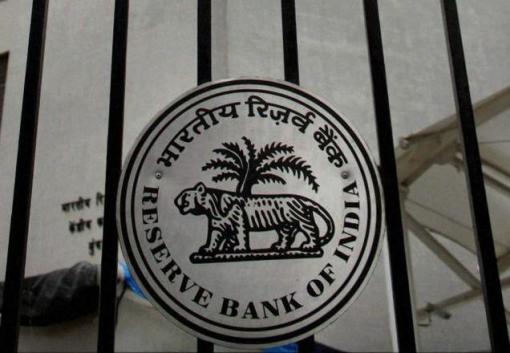The RBI’s roadmap for raising foreign currency reserves from 2013 is unlikely to be implemented.

When these economic fundamentals are so far different from those of 2013, the Indian central bank’s RBI’s game plan to protect the home currency against sharp losses and restock foreign exchange reserves is unlikely to be successful in the present crisis, economists said.
India’s foreign exchange reserves have decreased by about $110 billion since reaching a peak of $642 billion in September of last year. While this decline is largely attributable to a decline in the value of holdings in dollars and other foreign currencies, the central bank’s intervention in the currency market to defend the rupee is also a significant factor. The local currency lost nearly 11% of its value when compared to the US dollar in 2013, a loss it has already equalled this year, and most market players anticipate more losses by the end of 2022.
The Reserve Bank of India has used its foreign exchange reserves to safeguard the rupee. According to the most recent information available, which was made public on Monday, it has sold a net $43.15 billion worth of goods since the beginning of 2022, including $4.25 billion in August. Rebuilding the FX reserves would be crucial. “Since the fundamentals are also unfavorable, there would be urgency,” said Bank of Baroda Chief Economist Madan Sabnavis.
The RBI announced several steps to liberalize foreign exchange inflows in July, including expanding access to government debt for foreign investors and providing banks more freedom to increase non-resident deposits. However, they are not expected to be as successful now as they were back in 2013.
In 2013, when banks received US dollars through FCNR deposits or foreign currency funding, the RBI offered to exchange them for discounted rupees. Furthermore, it shifted foreign currency financing at a rate one percentage point lower than market rates and FCNR deposits with periods of three years or longer at a fixed rate of 3.5% annually, which was almost three percentage points lower than market rates at the time.
Nearly $34 billion had been received through these two exchange windows at a turning point, $26 billion of which came through the FCNR route alone.
According to Radhika Rao, senior economist at DBS Bank, “the FCNR deposits approach could not be as successful this time around, notably for factors like a narrower US-IN rate differential and less aggressive rate rises in this cycle, unlike back in 2013.” This time, the 3% gap is unlikely to assist investors to generate any profits on a fully hedged basis given the present hedging cost of between 6.5% and 7% and the fact that India’s 3-year bond rates are 7.5% and U.S. yields are 4.5%. Even if the RBI provided a discount window, which it hasn’t done so yet, profits seem improbable.
“On a fully hedged basis, a same level of subsidies will be insufficient. To make things work, either domestic interest rates must rise considerably or the RBI must enhance the subsidies.” The assertion was made by Vivek Kumar, a senior economist at Quantico Research. The fact that India’s economic basis has also worsened exacerbates the situation. The current fiscal year, which ends in March 2023, is expected to see the current account deficit expand and remain over 3% of GDP. Economists predict a negative balance of payments, which will reduce reserves further owing to changing capital flows.
Although the present level of stockpiles is sufficient to cover imports for more than eight months, economists warn a continuous decrease might raise some questions.
If the current account deficit stays over 3% of GDP, Kumar of QuantEco warned that a decline below eight months’ worth of import cover (about $500 billion) “could start garnering the market’s attention.” If reserves reach the equivalent of six months’ worth of import cover, or around $380 billion, a panic situation that calls for a strong policy response may develop.
While temporary remedies may bring some comfort, economists say policymakers should focus on improving underlying macro buffers. To assist raise foreign exchange reserves, Sabnavis of Bank of Baroda supported floating sovereign bonds, similar to the India Millennium Deposit Bonds (IMDs) and Resurgent India Bonds (RIBs) in the past. According to Sabnavis, if the dollar continues to gain, the rupee might fall as low as 84 and then much quicker, to 82-83 levels. A dollar now costs 82.28 in local currency.
Economists believe the RBI may need to revert to old methods of increasing forex reserves.
Experts caution that in order to maintain the steadily weakening currency, the Reserve Bank of India (RBI) may be compelled to turn to tried-and-true tactics to increase its foreign exchange reserves, such as luring non-resident Indians (NRIs) to deposit more money. The central bank of India has sold dollars to preserve the rupee, which has caused a 9.5% decline in value so far this year. The bank’s foreign exchange reserves have fallen from their peak of $642 billion last year to just $545 billion as a result.
According to research by the Japanese investment company Nomura, Asian central banks and governments may need to reconsider these policies as a secondary line of defense because they have historically relied on them to boost foreign exchange reserves. According to Nomura, the RBI in India has sought to restrict capital outflows, loosen regulations on commercial borrowing from overseas, and launch non-resident deposit programs, among other steps that might help with pressures associated with currency depreciation.

In July, the RBI allowed banks to solicit non-resident deposits in foreign currency at higher prices and allowed foreign investors to acquire local debt with shorter maturities in order to encourage more inflows. When the rupee was under pressure in 2013 as a result of the US Federal Reserve’s announced plans to reduce asset purchases, the central bank may have considered other options.
edited and proofread by nikita sharma






